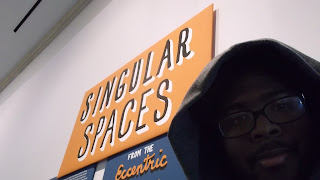"Singular Spaces" is a series of photos from Jo Farb Hernandez. It is mentioned that the spectacle seen in the photos are the work of eight artists and shows the importance of different styles coming together to create a single art piece. “Their creations are generally monumental in scale or in a number of components and are intended to be viewed and experienced as a whole...”
The exhibition shows Julio Basanta Lopez’s "House of God", a house that is surrounded by many statues that seem to resemble demons.
 |
| "House of God," protected by demons |
The house to me is a jumbled mess of figures and statues that even though look stylistically similar, don't seem to mesh with each other well at first glance. I believe that each figure or group of figures is unique since they have their own meaning and representation as well as made of different materials.
Regardless, I do think that their differences are important because all the statues and figures were made for the same purpose which is, according the description, to ward off demons. Their collective power creates an even greater power than what they could accomplish alone. It’s interesting that even though these figures were not created with the intention of being artwork, can be interpreted in this way. The collaborativeness seen in the photos is similar to the exhibition in Event 2, highlighting the importance of different fields working together to create and discover more than what they could do apart. I like that it has the subtitle "From the Eccentric to the Extraordinary," because of how this person superstition became an informative piece of artwork,












